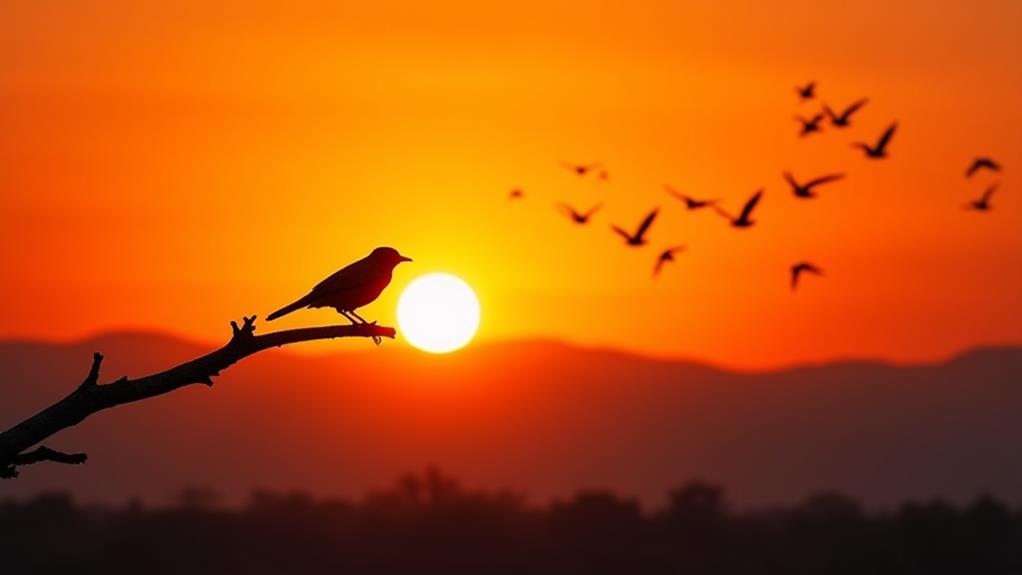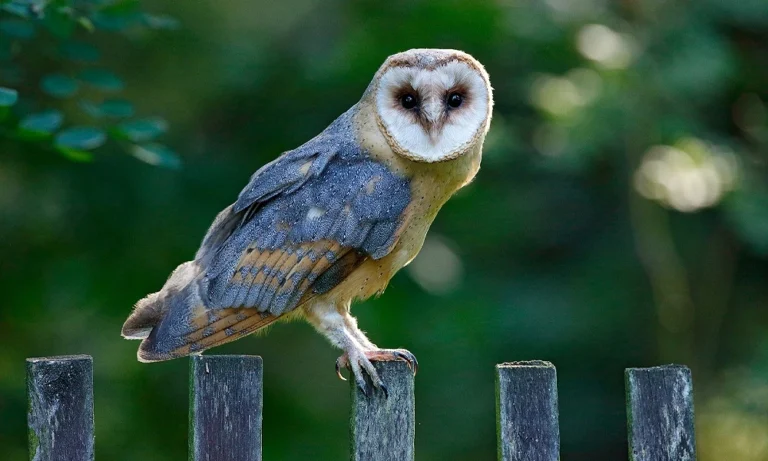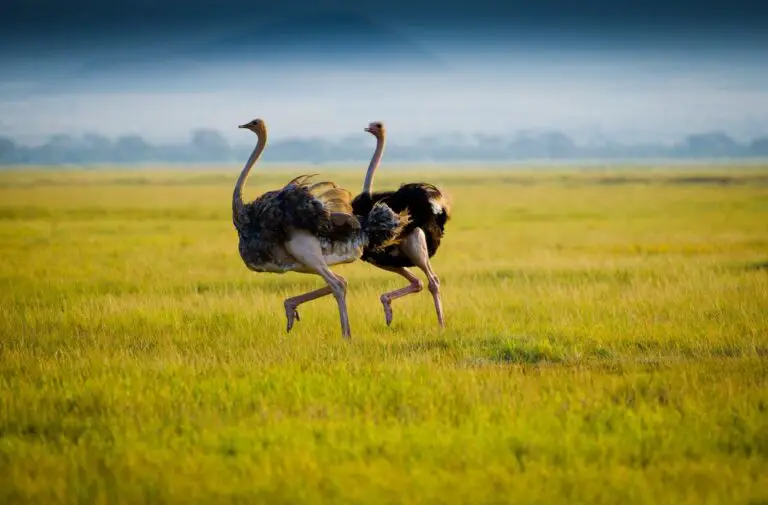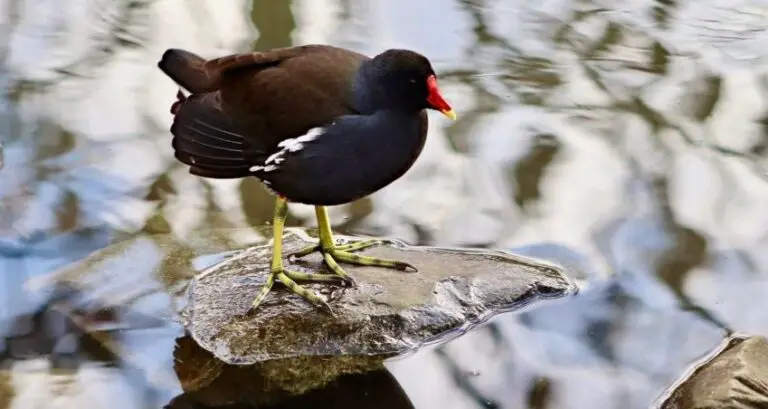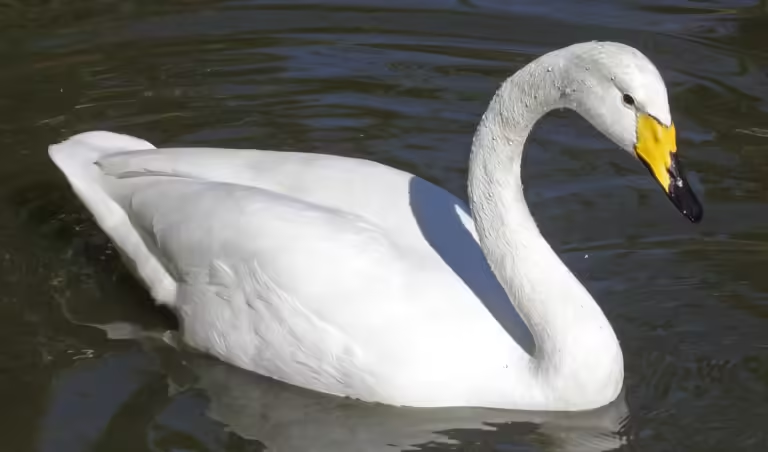You’re about to embark on a fascinating exploration of the Old World Oriole‘s incredible migration journey. Every year, these birds undertake a remarkable trip between their breeding and wintering grounds, covering thousands of miles with incredible precision. But what drives these birds to migrate, and how do they navigate such vast distances? It’s not just a matter of instinct – their survival depends on a delicate balance of habitat quality, food availability, and navigational skills. As you explore the oriole’s migratory world, you’ll discover the intricate web of factors that make their journey possible, but also the threats that put their very survival at risk.
Key Takeaways
- Old World Orioles migrate between subtropical and tropical regions of Africa and Asia, guided by celestial cues and magnetic fields.
- Their migration routes involve specific breeding and stopover sites for fueling and resting, influenced by food availability and climate.
- Habitat fragmentation threatens their migratory success by compromising breeding and stopover site quality and accessibility.
- Nectar is a primary energy source during migration, particularly from fruiting trees like fig trees (Ficus spp.), which provide essential sustenance.
- Old World Orioles also hunt insects to supplement their energy needs, using aerial pursuits and camouflage tactics to catch prey.
Breeding Grounds and Habitats
Old World Orioles are known to breed in a variety of habitats, primarily in subtropical and tropical regions of Africa and Asia.
As you observe their breeding grounds, you’ll notice that these birds thrive in areas with high habitat diversity. They inhabit forests, woodlands, and savannas, often near water sources like rivers, lakes, or coastal areas.
The diversity of habitats allows them to adapt to different environments and exploit various food sources.
Forest fragmentation, however, can impact their breeding success.
When forests are fragmented, the Orioles’ habitat becomes isolated, leading to reduced food availability and increased predation risk. In fragmented forests, you’ll often find Orioles breeding in the remaining large trees or near forest edges.
They tend to prefer areas with dense foliage and flowering plants, which provide nectar, fruits, and insects for food.
In their breeding grounds, Orioles typically build cup-shaped nests in tree forks or branches, using plant fibers, twigs, and other materials.
They often breed in loose colonies, with multiple pairs occupying the same area.
Migration Routes and Patterns

As you analyze the Old World Oriole’s migration, you’ll find that the bird’s routes and patterns involve specific breeding and stopover sites that provide essential resources for fueling and resting.
You’ll also observe that wintering grounds selection is influenced by factors such as food availability, climate, and predation pressure.
Breeding and Stopover Sites
Delving into the intricacies of the Old World Oriole’s migration, it becomes apparent that breeding and stopover sites play a pivotal role in the birds’ overall migratory success.
As you analyze the birds’ migratory patterns, you’ll notice that they exhibit strong site fidelity, returning to the same breeding and stopover sites year after year. This fidelity is crucial, as it allows the birds to capitalize on established resources and reduce the energy expenditure associated with finding new habitats.
However, habitat fragmentation poses a significant threat to the Old World Oriole’s migratory success.
As natural habitats are fragmented, the quality and accessibility of breeding and stopover sites are compromised. This can lead to reduced food availability, increased predation risk, and decreased reproductive success. In response, the birds may be forced to adapt their migratory routes and behaviors, potentially altering their site fidelity and increasing the energy expenditure associated with migration.
Understanding the complex interplay between habitat fragmentation, site fidelity, and migratory success is essential for developing effective conservation strategies for the Old World Oriole.
Wintering Grounds Selection
When considering the Old World Oriole’s migratory journey, you’ll notice that the selection of wintering grounds is a complex process influenced by various factors, including food availability, climate, and predation risk.
The Oriole’s habitat preference plays a significant role in determining its wintering grounds, as it tends to favor areas with dense vegetation and abundant fruiting trees. Research has shown that the species exhibits a strong affinity for tropical and subtropical regions, particularly those with mangrove forests and riparian woodlands.
Climate tolerance also influences the Oriole’s wintering grounds selection, as it seeks areas with mild temperatures and high levels of humidity.
The species is adapted to a wide range of climates, but it generally avoids areas with extreme temperatures and low humidity. In the wintering grounds, the Oriole’s diet consists mainly of fruits, nectar, and insects, which are abundant in its preferred habitats.
Route Navigation Patterns
Navigating the intricate networks of migration routes requires a complex interplay of innate and learned behaviors, with the Old World Oriole‘s incredible ability to traverse vast distances and reach its wintering grounds on time being a testament to its remarkable navigational prowess.
You may observe that the Old World Oriole’s route navigation patterns are influenced by a combination of genetic predisposition and environmental factors. Research suggests that these birds are born with an innate sense of direction, which is later refined through experience and learning.
As you track the Old World Oriole’s migration routes, you’ll notice that they follow specific patterns and paths, often taking advantage of favorable winds and topography.
Celestial cues, such as the position of the sun and stars, also play a crucial role in their navigation. Additionally, the birds use visual and olfactory cues to orient themselves and make adjustments to their route as needed.
Navigation and Orientation
Scientists have long been fascinated by the Old World Oriole’s impressive ability to pinpoint its destination during migration.
As you explore the intricacies of this phenomenon, it becomes apparent that the oriole’s navigation system relies on a complex interplay of various cues.
Celestial cues, such as the position of the sun, moon, and stars, play a significant role in guiding the oriole during its journey.
You’ll notice that these cues are particularly important during the initial stages of migration, when the oriole is establishing its overall trajectory.
In addition to celestial cues, the oriole also uses magnetic fields to orient itself.
Research has shown that the oriole can detect the Earth’s magnetic field and use it to determine its direction.
This ability is made possible by the presence of magnetite, a magnetically sensitive mineral, in the oriole’s brain.
As you delve deeper into the oriole’s navigation system, you’ll discover that it’s capable of integrating information from multiple sources to create a highly accurate mental map of its surroundings.
This remarkable ability allows the oriole to navigate its migration route with incredible precision.
Food and Energy Sources

As you examine the Old World Oriole’s migration patterns, you’ll notice the birds’ reliance on specific food sources for energy.
You’ll observe that nectar plays a crucial role as a fuel source during long-distance flights, while fruiting trees provide essential sustenance at stopover points.
You’ll also discover the orioles’ unique insect hunting techniques, which supplement their diet and help maintain energy reserves.
Nectar as Fuel Source
Most notably, the high-energy nectar of flowers plays a vital role in fueling the Old World Oriole’s migration.
As you observe the oriole’s foraging behavior, you’ll notice that nectar is a primary source of energy, particularly during the migration period.
The high sugar content in nectar provides a quick and efficient source of energy for the oriole.
The oriole’s sugar intake is carefully regulated to meet its energy needs.
As it forages, the oriole’s digestive system rapidly processes nectar, converting it into a usable form of energy.
This energy is then stored in the form of glycogen, a complex carbohydrate that can be readily converted into energy when needed.
The oriole’s ability to store energy from nectar is crucial for its survival during migration.
By storing energy, the oriole can sustain itself during periods of limited food availability, ensuring that it can complete its journey.
The efficient use of nectar as a fuel source is essential to the Old World Oriole’s successful migration, enabling it to traverse vast distances while minimizing energy expenditure.
As a result, nectar plays a vital role in sustaining the oriole’s energy needs throughout its journey.
Fruiting Tree Dependence
Observing the Old World Oriole’s foraging behavior reveals a striking dependence on fruiting trees for both sustenance and energy.
As you note the oriole’s activities, you’ll see that it’s highly selective when it comes to tree selection. The birds tend to favor trees with an abundant fruit quantity, often focusing on a single species at a time.
For example, fig trees (Ficus spp.) are a staple in the oriole’s diet, particularly during the spring migration. The birds will visit these trees repeatedly, feeding on the ripe fruits and taking advantage of the energy-rich resource.
The oriole’s reliance on fruiting trees isn’t limited to a specific type, but rather to the availability of fruit.
In general, the birds will seek out trees with a high fruit quantity, often ignoring those with sparse or unripe fruits. This foraging strategy allows the orioles to maximize their energy intake, which is crucial during their long migrations.
By targeting fruiting trees with an abundance of ripe fruits, the orioles can replenish their energy reserves and maintain their bodily functions.
This dependence on fruiting trees highlights the importance of these resources in supporting the oriole’s migratory journey.
Insect Hunting Techniques
While fruiting trees are a vital source of energy for the Old World Oriole during its migration, they’re not the only resource the bird relies on.
As you observe the oriole’s foraging behavior, you’ll notice its insect hunting techniques play a crucial role in supplementing its energy needs. The bird’s agility and speed allow it to catch insects in mid-air, using its sharp, pointed beak to snatch unsuspecting prey.
In addition to aerial pursuits, the oriole also employs camouflage tactics to sneak up on insects in vegetation.
Its bright plumage may seem counterintuitive to stealth, but the oriole’s ability to freeze in place and blend in with its surroundings allows it to remain undetected. This tactic is especially useful for avoiding predators, as the oriole’s stillness makes it difficult to spot.
The oriole’s insect hunting techniques also involve predator avoidance strategies.
Predators and Threats
In navigating their migratory routes, Old World Orioles must contend with a multitude of predators and threats lurking in their path.
As you observe these birds’ remarkable journeys, you’ll notice that they’re constantly under pressure from various adversaries.
Hunting pressures, in particular, play a significant role in shaping their migratory behavior.
Some of the key predators and threats that Old World Orioles face during their migrations include:
- Falcons and other birds of prey, which exploit the Orioles’ vulnerability in flight
- Snakes and other reptiles, which prey on the birds and their nests
- Mammals, such as weasels and raccoons, which raid nests and attack adult birds
- Human disturbance, such as habitat destruction and collision with human-made structures
- Climate-related threats, including extreme weather events and changing environmental conditions
Human disturbance, in particular, is a significant concern, as it can disrupt the Orioles’ migratory patterns and breeding habits.
Flocking Behavior and Social Structure
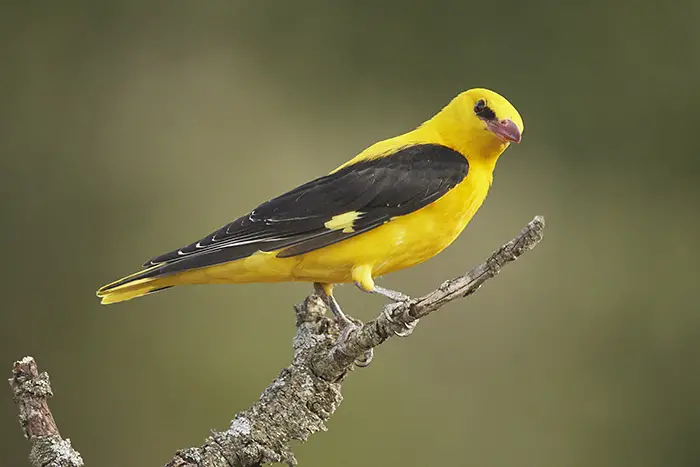
As you observe the Old World Oriole’s behavior, you’ll notice that they consistently congregate in flocks, which can vary in size depending on the season and availability of food resources.
Within these flocks, you’ll recognize a distinct dominance hierarchy, where dominant individuals establish priority access to resources and mating opportunities.
Flock Size Dynamics
Old World Orioles often form large foraging flocks during their migrations, comprising dozens to hundreds of birds.
As you observe these flocks, you’ll notice that their size dynamics play a crucial role in maintaining flock cohesion and group formation. Flock size can significantly impact the overall foraging success and predator avoidance strategies of the group.
Key factors influencing flock size dynamics include:
- *Flock cohesion mechanisms*, such as visual and auditory cues, which help maintain group unity and facilitate communication among members.
- *Group formation strategies*, such as joining existing flocks or forming new ones, which can affect the overall size and composition of the flock.
- *Resource availability*, which can influence the number of individuals that can be supported by a particular foraging area.
- *Predator pressure*, which can lead to the formation of larger flocks as a defense mechanism.
- *Environmental factors*, such as weather and habitat quality, which can impact the distribution and abundance of food resources, in turn affecting flock size.
Dominance Hierarchy Forms
When examining the social dynamics of Old World Oriole flocks, you’ll notice that a clear dominance hierarchy forms, influencing flocking behavior and social structure.
This hierarchy is established through agonistic interactions, such as agonistic displays, chases, and fights. Dominant individuals assert their dominance through vocalizations, posturing, and physical confrontations, while subordinate birds submit by retreating or displaying appeasement behaviors.
As the dominance hierarchy forms, social bonds develop within the flock. Birds that frequently interact and engage in affiliative behaviors, such as preening and vocalizing, strengthen their social bonds.
These bonds contribute to the stability of the flock’s social structure, ensuring that individuals cooperate and work together. However, rivalry dynamics also emerge, particularly among birds of similar dominance ranks.
These rivalries can lead to increased agonistic interactions, but they also stimulate the establishment of a clear dominance hierarchy.
The dominance hierarchy plays a crucial role in maintaining social order within Old World Oriole flocks. By understanding this hierarchy, you can better appreciate the complex social dynamics at play during the Old World Oriole’s migration.
Foraging Group Tactics
During the Old World Oriole’s migration, you’ll witness the formation of foraging groups that exhibit complex flocking behavior and social structure.
As you observe these groups, you’ll notice that individuals employ various foraging strategies to optimize their food intake. These strategies often rely on social learning, where orioles learn from each other and adapt to their environment.
Foraging group tactics are essential for the orioles’ survival, as they allow individuals to exploit food sources more efficiently.
You’ll see that dominant birds often lead the foraging groups, guiding others to the best foraging areas. Subordinate birds, on the other hand, may focus on exploiting peripheral resources or learning from the dominant birds.
Some key aspects of the Old World Oriole’s foraging group tactics include:
- Cooperative foraging, where birds work together to obtain food
- Dominance-based foraging, where dominant birds prioritize access to resources
- Information sharing, where birds communicate about food sources
- Foraging specialization, where individuals develop unique foraging skills
- Resource partitioning, where birds divide resources to minimize competition
Altitudinal Migration Strategies
Emigrating to higher elevations in response to seasonal changes, many bird species, including the Old World Oriole, employ altitudinal migration strategies to optimize their access to food resources. As you study the Old World Oriole’s migration patterns, you’ll notice that these birds often move between mountain habitats and forest corridors in search of suitable food sources.
| Migration Route | Elevation (meters) | Habitat Type |
|---|---|---|
| Spring migration | 1,000 – 1,500 | Forest corridors with abundant insects |
| Summer breeding | 1,500 – 2,500 | Mountain meadows with nectar-rich flowers |
| Autumn migration | 1,000 – 1,500 | Forest corridors with ripening fruits |
| Winter foraging | 500 – 1,000 | Lowland forests with berry-producing shrubs |
Birds Flight Patterns and Speed
As you track the Old World Oriole’s migration, you’ll notice these birds cover significant distances at varying altitudes, necessitating different flight patterns and speeds to adapt to the changing environment.
Their flight behavior is influenced by wind patterns, topography, and weather conditions, which require adjustments in their flight paths and wing beats.
To optimize their energy expenditure, Old World Orioles adopt various flight patterns, including:
- Rising thermals: Birds use rising columns of warm air to gain altitude and cover long distances with minimal effort.
- Soaring: Orioles use wind currents and rising air to stay aloft, covering long distances without flapping their wings.
- Gliding: Birds use gravity to their advantage, gliding through the air to conserve energy.
- Flapping: Wing beats are used to generate lift and thrust when other flight patterns aren’t feasible.
- Altitudinal changes: Birds adjust their altitude to find favorable wind patterns and temperature gradients, optimizing their flight efficiency.
Wintering Grounds and Adaptations
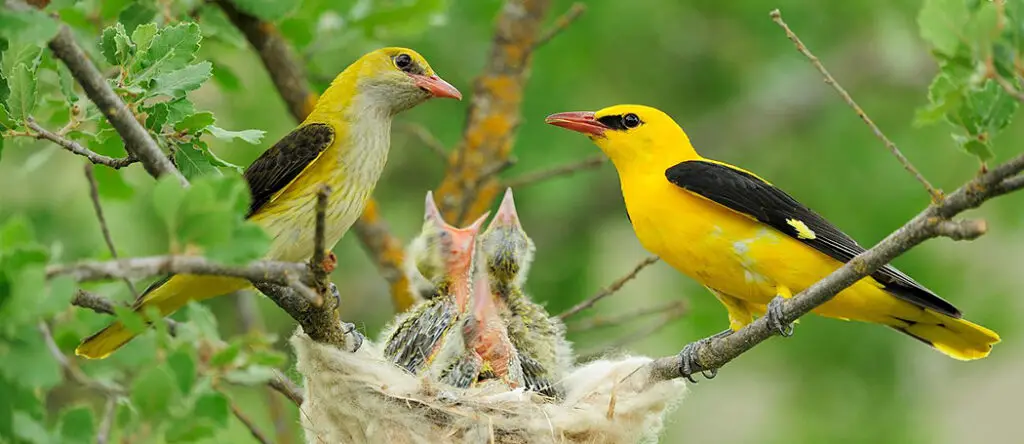
Upon reaching their destinations, Old World Orioles settle in specific regions that offer favorable conditions for survival, often characterized by abundant food sources and suitable habitats.
These areas typically include tropical and subtropical regions in Africa, Asia, and parts of Australia, where temperatures are warmer and more consistent. You’ll find that these birds tend to congregate in woodlands, savannas, and mangrove forests, where they can feed on insects, fruits, and nectar.
Old World Orioles have adapted to their wintering grounds through a combination of genetic predisposition and environmental influences.
Their ability to survive in a variety of habitats is likely an adaptation to unpredictable environmental conditions, such as cold snaps, which can impact food availability. As a result, these birds have developed flexible foraging strategies and nutritional adaptations that enable them to thrive in diverse environments. For example, they can adjust their diet to include more insects and spiders during periods of fruit scarcity.
These adaptations enable Old World Orioles to survive and even exploit their wintering grounds, allowing them to conserve energy and prepare for their return migration.
Conservation Efforts and Status
Several Old World Oriole species are currently listed on the International Union for Conservation of Nature (IUCN) Red List, indicating their vulnerable or near-threatened status.
As you consider the conservation efforts and status of these birds, it’s essential to understand the challenges they face. Habitat fragmentation, for instance, has led to population decline in some species, making conservation efforts more complicated.
Moreover, preserving genetic diversity is crucial for the long-term survival of Old World Orioles, as it allows populations to adapt to changing environmental conditions.
To address these concerns, conservation organizations are implementing various strategies:
- Conducting research to identify and protect key habitats and migration routes
- Collaborating with local communities to promote sustainable land-use practices
- Establishing protected areas to safeguard against habitat fragmentation
- Monitoring population trends to inform conservation decisions
- Developing species-specific conservation plans to address unique needs and threats
FAQs: Old World Oriole
Can Old World Orioles Be Kept as Pets Successfully?
You can keep Old World Orioles as pets, but it’s challenging. They require a varied captive diet and consistent pet training. Providing a suitable environment with a balanced diet and proper care is crucial for their well-being.
Do Orioles Migrate Alone or in Large Groups?
When studying bird migration patterns, you’ll find that some species, like songbirds, often migrate alone as solo travelers, while others, such as waterfowl, exhibit complex flock dynamics, traveling in large, organized groups.
What Is the Average Lifespan of an Oriole?
You’ll find that the average lifespan of an oriole varies, typically ranging from 2-8 years in the wild, influenced by habitat factors and food availability, which significantly impact mortality rates and overall population dynamics.
Can Orioles Adapt to Urban Environments and Gardens?
Imagine yourself transforming a barren yard into a vibrant oasis. As you create this haven, you’ll find that orioles can adapt to urban environments and gardens, particularly those with diverse garden biodiversity, by incorporating native plants and trees.
Are Orioles Known to Be Aggressive Bird Species?
You’ll find that orioles exhibit territorial behavior during breeding seasons, fiercely defending their nests and feeding areas. At feeders, they can be aggressive, especially when competing for food sources, reflecting their natural foraging habits.
Conclusion
As you delve into the Old World Oriole’s migration, it becomes clear that conservation efforts are crucial to its survival. Habitat fragmentation is a ticking time bomb, threatening to disrupt the delicate balance of breeding and stopover sites. Like a masterfully crafted puzzle, the oriole’s migratory journey relies on precise navigation, adequate food sources, and strategic adaptations. Understanding these intricacies is key to safeguarding the species’ future, before the pieces of this complex puzzle begin to crumble.

